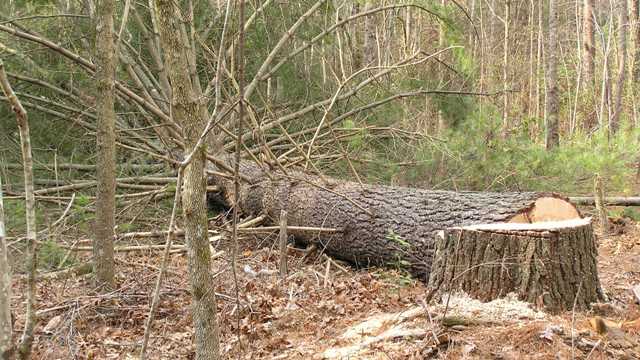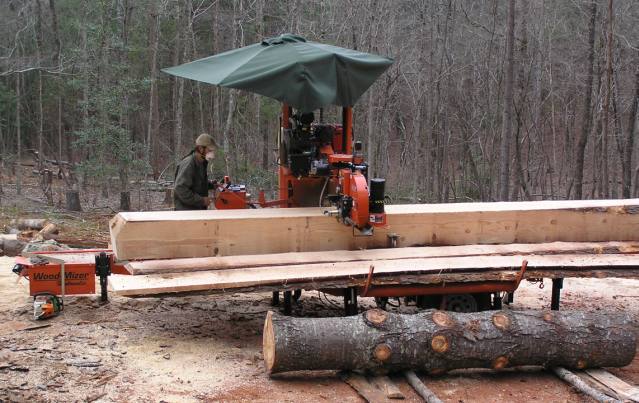
Once you’ve decided to build a timber frame structure, it’s never too early to begin considering your wood procurement. Your builder can help you develop plans and an accurate materials list. Finding and transporting large timbers can provide some challenging moments, but it can also be as easy as making a few calls to friends with heavy-duty trailers or meeting with the local sawyer.
There are several options for procuring wood:
Buying from a Wood Broker or Mill
A wood broker deals with mills and salvage dealers of all sizes. They are most likely to secure rare woods and different grades quickly. Brokers are good at what they do and are experts at shipping and delivery. When a broker secures your timbers, you can bet that they will arrive planned, dry, and ready to use. These advantages do involve extra costs.
Buying from a local sawmill or sawyer

No matter where your structure will be located, you may be surprised at the number of mills in your area. Native species will obviously be less expensive and readily available. Sourcing your wood this way may qualify your home for LEED certification since you will not spend much on fossil fuels for long-distance delivery. You’ll also be supporting another local business person in your area. Depending on the sawyer, you may be responsible for hauling the timbers to your site. Clearly communicate with your sawyer, as large timbers are not typically their specialty. However, most do a great job in this extended capacity.
Milling Your Owner Timbers

If you’re looking for the ultimate self-sufficient method of building your timber frame home, you can borrow or rent the equipment to cut timbers from the standing trees on your home site. Portable band saws or mills range in size and complexity–the bigger they are generally, the easier they are to use. Owning one of these machines may be a bit expensive for the average home builder. It takes hard work and skill to master this process, but it can be done. There will be plenty of opportunities to roll up your sleeves and work hard during the building process, so I recommend hiring someone to do your on-site milling. An experienced lawyer can maximize the usable wood taken from each log, reducing waste and time spent milling on-site. They can also cut custom pieces, for example, timbers with natural curves. Lastly, on-site milling means you are responsible for clearing all the waste by either burning it or hauling it off.
Wood Mizers are the only wood mill in my opinion! I love mine and couldn’t live without it.
I’ve used Baker, Cooks, Timberking, hud-son, and Wood Mizers. Found the Wood Mizer to be the least accurate due to the cantilever sled and the most tiresome due to walking in sawdust all day. Before you get angry, I was a partner in a business selling sawmills and we even explored manufacturing for a while. Still own an old Baker, fully hydraulic, and think you should use whatever pleases you.
Thank you for your comments, sounds like your opinions are based on extensive experience.